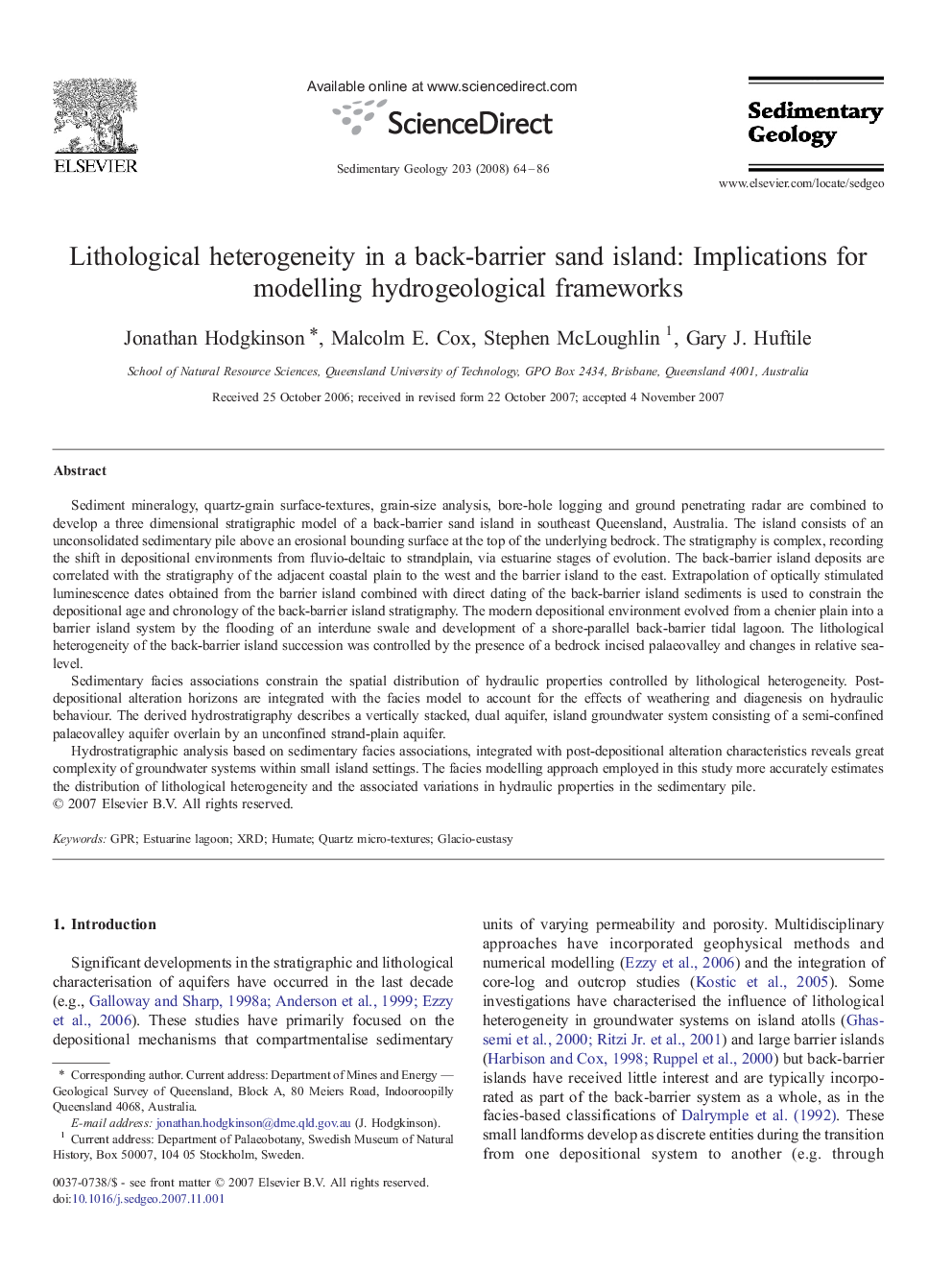| Article ID | Journal | Published Year | Pages | File Type |
|---|---|---|---|---|
| 4690682 | Sedimentary Geology | 2008 | 23 Pages |
Sediment mineralogy, quartz-grain surface-textures, grain-size analysis, bore-hole logging and ground penetrating radar are combined to develop a three dimensional stratigraphic model of a back-barrier sand island in southeast Queensland, Australia. The island consists of an unconsolidated sedimentary pile above an erosional bounding surface at the top of the underlying bedrock. The stratigraphy is complex, recording the shift in depositional environments from fluvio-deltaic to strandplain, via estuarine stages of evolution. The back-barrier island deposits are correlated with the stratigraphy of the adjacent coastal plain to the west and the barrier island to the east. Extrapolation of optically stimulated luminescence dates obtained from the barrier island combined with direct dating of the back-barrier island sediments is used to constrain the depositional age and chronology of the back-barrier island stratigraphy. The modern depositional environment evolved from a chenier plain into a barrier island system by the flooding of an interdune swale and development of a shore-parallel back-barrier tidal lagoon. The lithological heterogeneity of the back-barrier island succession was controlled by the presence of a bedrock incised palaeovalley and changes in relative sea-level.Sedimentary facies associations constrain the spatial distribution of hydraulic properties controlled by lithological heterogeneity. Post-depositional alteration horizons are integrated with the facies model to account for the effects of weathering and diagenesis on hydraulic behaviour. The derived hydrostratigraphy describes a vertically stacked, dual aquifer, island groundwater system consisting of a semi-confined palaeovalley aquifer overlain by an unconfined strand-plain aquifer.Hydrostratigraphic analysis based on sedimentary facies associations, integrated with post-depositional alteration characteristics reveals great complexity of groundwater systems within small island settings. The facies modelling approach employed in this study more accurately estimates the distribution of lithological heterogeneity and the associated variations in hydraulic properties in the sedimentary pile.
